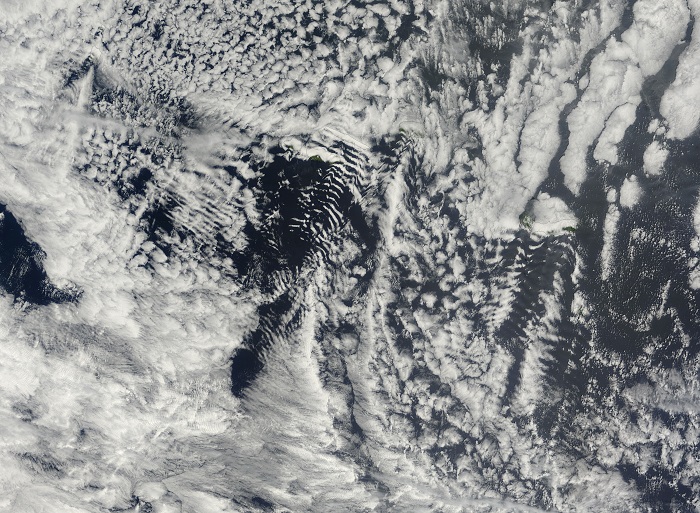ISABEL RUBIO ARROYO | Tungsteno
The millions of ships that ply the oceans every day emit particles that can create brighter clouds capable of producing a cooling effect in the atmosphere and reflecting more sunlight back into space. But they have a big drawback: their enormous environmental impact. Would it be possible to achieve such an effect without simultaneously releasing so much greenhouse gas and toxic pollutants? This is the ambitious goal of the Marine Cloud Brightening (MCB) Project.
Seawater to curb climate change
The researchers' plan is to spray seawater from ships and then assess whether the clouds that form reflect more light back into space and thus make it possible to cool the planet. "We expect that the sprayed water would instantly dry in the air and form tiny particles of salt, which would rise to the cloud layer via convection and act as seeds for cloud droplets," the project's scientists explain in the scientific journal IEEE Spectrum.
The aim is to produce clouds that are slightly brighter (5-10%) and possibly longer lasting than traditional clouds, which would theoretically help them reflect more sunlight. Quantifying whether marine clouds are more or less reflective can be difficult, according to Philip Rasch, head of climate science at the Pacific Northwest National Laboratory. "The question is whether these techniques can be used to brighten clouds sufficiently to be a factor in operating to cool the planet," he says.
Sarah Doherty, a research scientist at the University of Washington's Cooperative Institute for Climate, Ocean and Ecosystem Studies, agrees that the key question is whether marine cloud brightening "is a feasible way to slow global warming and, if you did it, what would be the full sweep of impacts." Combating climate change is one of the great challenges of the century, as it is advancing at a pace unprecedented over millennia, as NASA points out.
MCB researchers aim to find out if it is possible to increase cloud reflectivity reliably and predictably. Credit: WebsEdge Science.
Reflecting sunlight back into space
There are other projects that attempt to reflect sunlight to reduce global warming. This strategy is called solar climate intervention. While some scientists are trying to spread reflective silicate beads over polar sea ice, others plan to inject materials with reflective properties—such as sulphates or calcium carbonate—into the stratosphere. "None of the approaches in this young field are well understood, and they all carry potentially large unknown risks," say the Marine Cloud Brightening researchers.
The advantages of the cloud brightening project include the ease with which abundant quantities of seawater can be obtained free of charge. In addition, most of it would be returned to the ocean. Another strength of this technique is that it can be done from the sea. Therefore, by not relying on aircraft, "the costs and associated emissions would be relatively low."
As the effects of particles in clouds "are temporary and localised", experiments could be conducted in small areas and for short periods of time without seriously disturbing the environment. For example, water could be sprayed for a few hours a day for several weeks or months. The researchers also stress the option of quickly halting the project, which would rapidly end its effects.

In satellite images, some oceans are covered by white bands of clouds that correspond to shipping lanes. Credit: NASA.
Major challenges in analysing feasibility
Despite all these advantages and the possible potential of this technique, there are still many unanswered questions and multiple experiments and research are needed. In addition to finding out whether it is possible to increase cloud reflectivity reliably and predictably, one of the priorities is to study any possible unintended negative consequences.
In addition, more modelling is needed to understand how this technique would affect weather and climate both locally and globally. Robert Wood, professor of atmospheric sciences at the University of Washington, raises some unanswered questions: "If we could brighten these clouds, what would happen to the climate system? Would there be changes in precipitation patterns? Would changes related to different levels of sunlight affect ocean ecosystems?"
It is still too early to know whether this technique will be effective in slowing down climate change, or whether it won’t work well enough or even be too risky. The researchers themselves admit that not enough is known to date to advocate its implementation and therefore do not suggest it as an alternative to reducing emissions. "We hope to shed light on its feasibility as a tool to make the planet safer," they conclude.
· — —
Tungsteno is a journalism laboratory to scan the essence of innovation. Devised by Materia Publicaciones Científicas for Sacyr’s blog.
